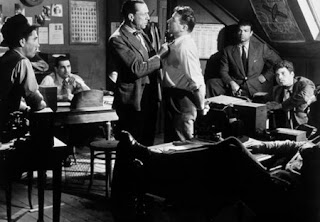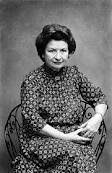Living by the code
In 1940 P.G. Wodehouse was living at Le Toquet. Stunned by the advance of the German army, he, along with a good proportion of the British Expeditionary Force, ended up as a prisoner of the Third Reich. Perhaps not surprisingly, Wodehouse was popular with the Germans, many of whom had been keen on the British upper class and its mores pre-war.
Britons though were left dismayed when Wodehouse was released from imprisonment, installed in the Hotel Adlon in Berlin, and proceeded to give a number of talks on German radio. Was Wodehouse a traitor? A fascist in upper-class-twit's clothing? George Orwell was quick to defend Wodehouse, accusing him of stupidity rather than betrayal. And I think Orwell was quite right.
No true fascist could conjure up such a figure of fun as the proto-fascist, Roderick Spode (founder of the Black Shorts). Spode is at his most odious, and Wodehouse at his best in his 1938 Jeeves and Wooster comedy The code of the Woosters. The story opens in classic Wodehouse fashion with Bertie Wooster given the formidable task by his Aunt Dahlia to go and sneer at a cow-creamer. Unfortunately sneering at it proves to be too hard a task for Wooster, who, after a run-in with a cat, nearly finds himself in jail, with Spode and Sir Watkyn Bassett convinced that he is an unrepentant thief.
Things soon get a lot blacker for Bertie though when he is forced to go to the home of Sir Watkyn Bassett, avoid Spode, and the possibility of marrying the frightful Madeleine Bassett, while trying to bring two lots of lovers together. And all because of the code of the Woosters - Never let a pal down.
Code of the Woosters is Wodehouse at his best - incredibly funny, a classic English tale that could have come out of Shakespeare, but with the comic verve, wit, and writing of a genius. Brilliantly funny, with a hint of satire, this couldn't be written by a fascist, they just wouldn't have the humour.
Britons though were left dismayed when Wodehouse was released from imprisonment, installed in the Hotel Adlon in Berlin, and proceeded to give a number of talks on German radio. Was Wodehouse a traitor? A fascist in upper-class-twit's clothing? George Orwell was quick to defend Wodehouse, accusing him of stupidity rather than betrayal. And I think Orwell was quite right.
No true fascist could conjure up such a figure of fun as the proto-fascist, Roderick Spode (founder of the Black Shorts). Spode is at his most odious, and Wodehouse at his best in his 1938 Jeeves and Wooster comedy The code of the Woosters. The story opens in classic Wodehouse fashion with Bertie Wooster given the formidable task by his Aunt Dahlia to go and sneer at a cow-creamer. Unfortunately sneering at it proves to be too hard a task for Wooster, who, after a run-in with a cat, nearly finds himself in jail, with Spode and Sir Watkyn Bassett convinced that he is an unrepentant thief.
Things soon get a lot blacker for Bertie though when he is forced to go to the home of Sir Watkyn Bassett, avoid Spode, and the possibility of marrying the frightful Madeleine Bassett, while trying to bring two lots of lovers together. And all because of the code of the Woosters - Never let a pal down.
Code of the Woosters is Wodehouse at his best - incredibly funny, a classic English tale that could have come out of Shakespeare, but with the comic verve, wit, and writing of a genius. Brilliantly funny, with a hint of satire, this couldn't be written by a fascist, they just wouldn't have the humour.










Comments